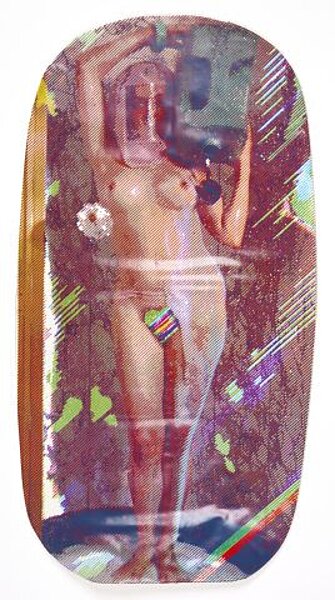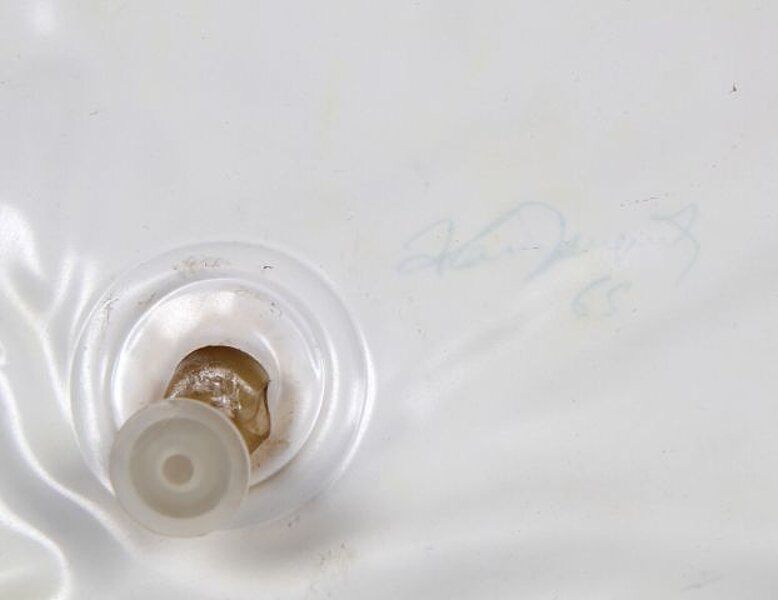
Jacquet, Alain
La Source
1965
| Object description | Silkscreen on inflatable plastic pillow |
|---|---|
| Dimensions |
Objektmaß:
height: 83 cm,
width: 45 cm
|
| Year of acquisition | 1978 |
| Inventory number | B 442/0 |
| Creditline | mumok - Museum moderner Kunst Stiftung Ludwig Wien, ehemals Sammlung Hahn, Köln |
| Rights reference | Bildrecht, Wien |
| Further information about the person | Jacquet, Alain [GND] |
| Literature |
museum moderner kunst.SAMMLUNG HAHN Hyper Real |
In 1962, the French artist Alain Jacquet embarks on his Camouflage series: famous Renaissance paintings such as Leonardo’s "Last Supper" or Botticelli’s "Birth of Venus" are covered with a camouflage pattern whose colour fields are strongly reminiscent of your typical painting-by-numbers picture. The artist, in pretending to follow the guidelines of popular how-to manuals written for laymen, casts an ironic light on the creative process. The same spirit pervades his Trames series, which he began in 1964: here, Jacquet dissolves art historical motifs from the nineteenth and twentieth century into single dots of colour. Like his American Pop Art colleagues Andy Warhol, Roy Lichtenstein or Robert Rauschenberg, he makes use of the mechanical process of silk-screen printing. The work shown here, “La Source” from 1965, reinterprets Jean-Auguste-Dominique Ingres’ famous 1856 nude of that title, presenting his own humorous pop version of it. Jacquet uses the trivial iconography of consumerism in order to demythologize and deconstruct Ingres’ nymph. The classic amphora of the original is replaced by a plastic container, and the nude is no longer framed by an idyllic crevice but by a shower cabin resting on an inflatable rubber pillow.
© mumok – museum moderner kunst stiftung ludwig wien


